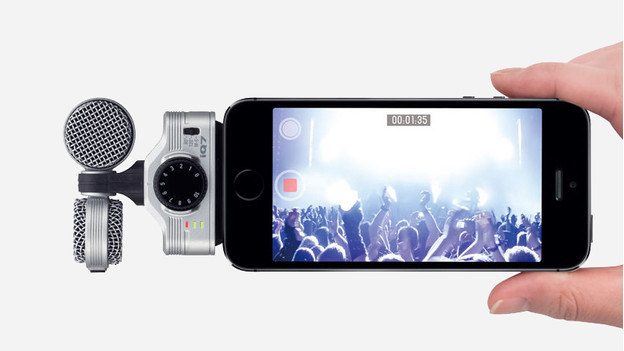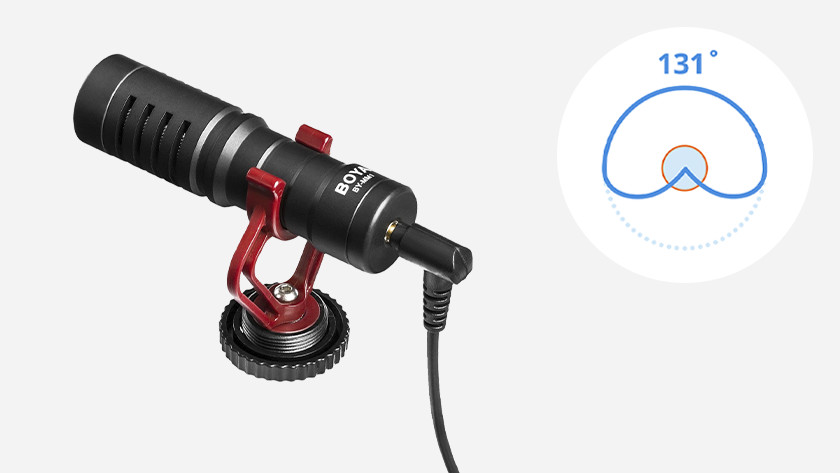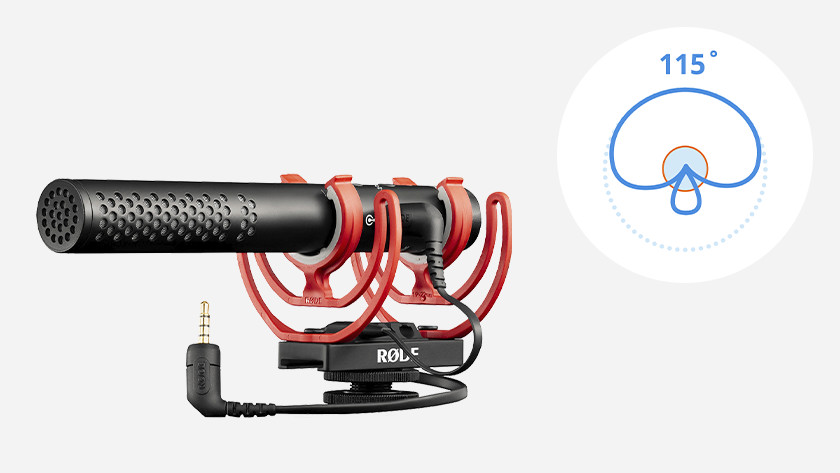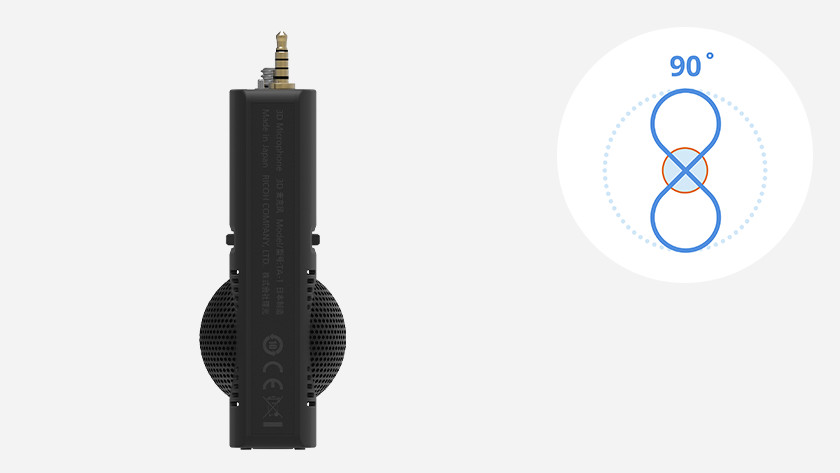
What type of external camera microphone do I need?
Shotgun microphone

If you record conversations between 2 people or an interview, you choose a shotgun microphone. Most shotgun microphones have a supercardioid directional characteristic that blocks sounds from the sides and the back. This allows you to record isolated sounds from a short distance. These microphones are also very suitable for recording an audio track in a studio.
Stereo microphone

Sometimes you want to include ambient noise in your recording. For instance when making a documentary in which you record in a room. Here, you also want to record some ambiance. In this case, you use a stereo microphone. This microphone captures sound as we hear it with 2 ears. The 2 internal microphones both point in one direction which allows a mix of the ambient noise to be registered.
Tie-pin microphone

As soon as you make a speech, it is often not possible to place your video microphone close to the audio source. A handheld microphone is also not always suitable because of the limited freedom of movement. In these situations, you use a lavalier, also known as a lapel microphone. This microphone only records what the wearer says. When recording an interview, you use a discreet lavalier that is invisibly placed on a jacket.
Directional characteristic: what is it?
The directional characteristic of a camera microphone determines from which direction the microphone is most sensitive. Besides the front, this can also be from the side or the back. This sensitivity determines in which situation you can use a particular microphone and how much ambient noise you get in your recording. The different directional characteristics are cardioid, supercardioid, omnidirectional and bi-directional.

Cardioid
A cardioid camera microphone mainly records sound from the front. The recording angle is 131 degrees, which means that (to a lesser extent) sound from the sides is included in your recording. This ensures minimal ambient noise, which creates the space and atmosphere of the environment in the sound. You mainly use a cardioid microphone for documentaries, interviews, events, weddings, singing, and music.

Supercardioid
A camera microphone with a supercardioid directional characteristic is very sensitive to front sound. So you aim this microphone specifically at the source that you want to record, preferably as close as possible. Due to the recording angle of 115 degrees, this microphone hardly absorbs any ambient noise. That makes the supercardioid suitable for use on film sets, vlogging, and reporting.

Omnidirectional
This microphone records sound all around. The signals come in equally well from all sides. This means that this microphone doesn't have to be specifically aimed at the source. That's why you often see an omnidirectional microphone in tie clip microphones, which we often see clipped on someone's clothing during presentations, talk shows, or interviews. Clipped to a jacket, the speaker can move his head freely with this type of microphone, without sound being cut off.

Bi-directional
Do you want a microphone that picks up the sound from both sides equally loudly? Choose a bi-directional microphone. Depending on how you place the microphone, the sound is recorded from both the front and back, or both sides. The recording angle of a bi-directional microphone is 90 degrees and you have little to no ambient noise. You can use this microphone for podcasts and radio interviews, for example, so that you can record conversations between two people from both sides.


